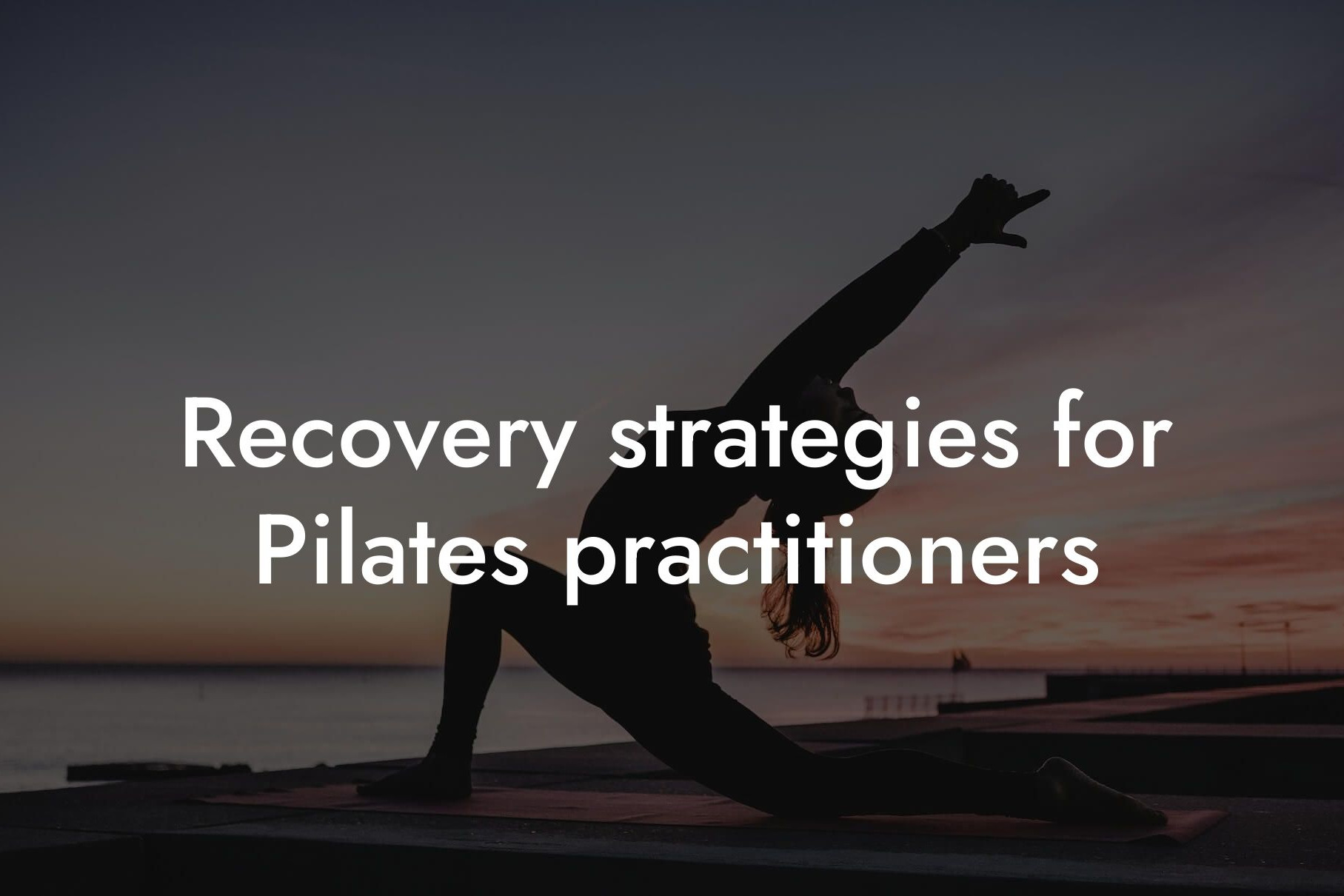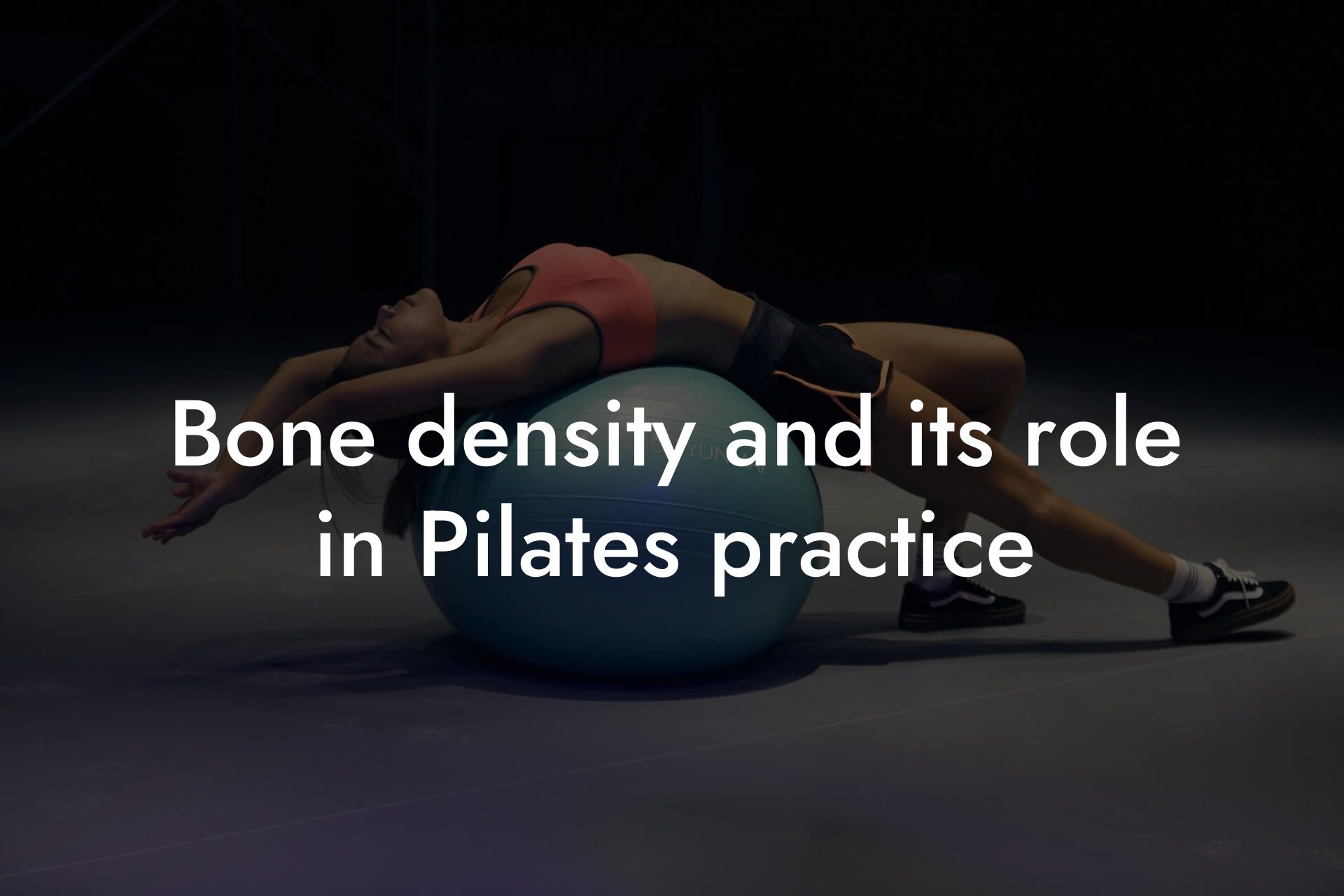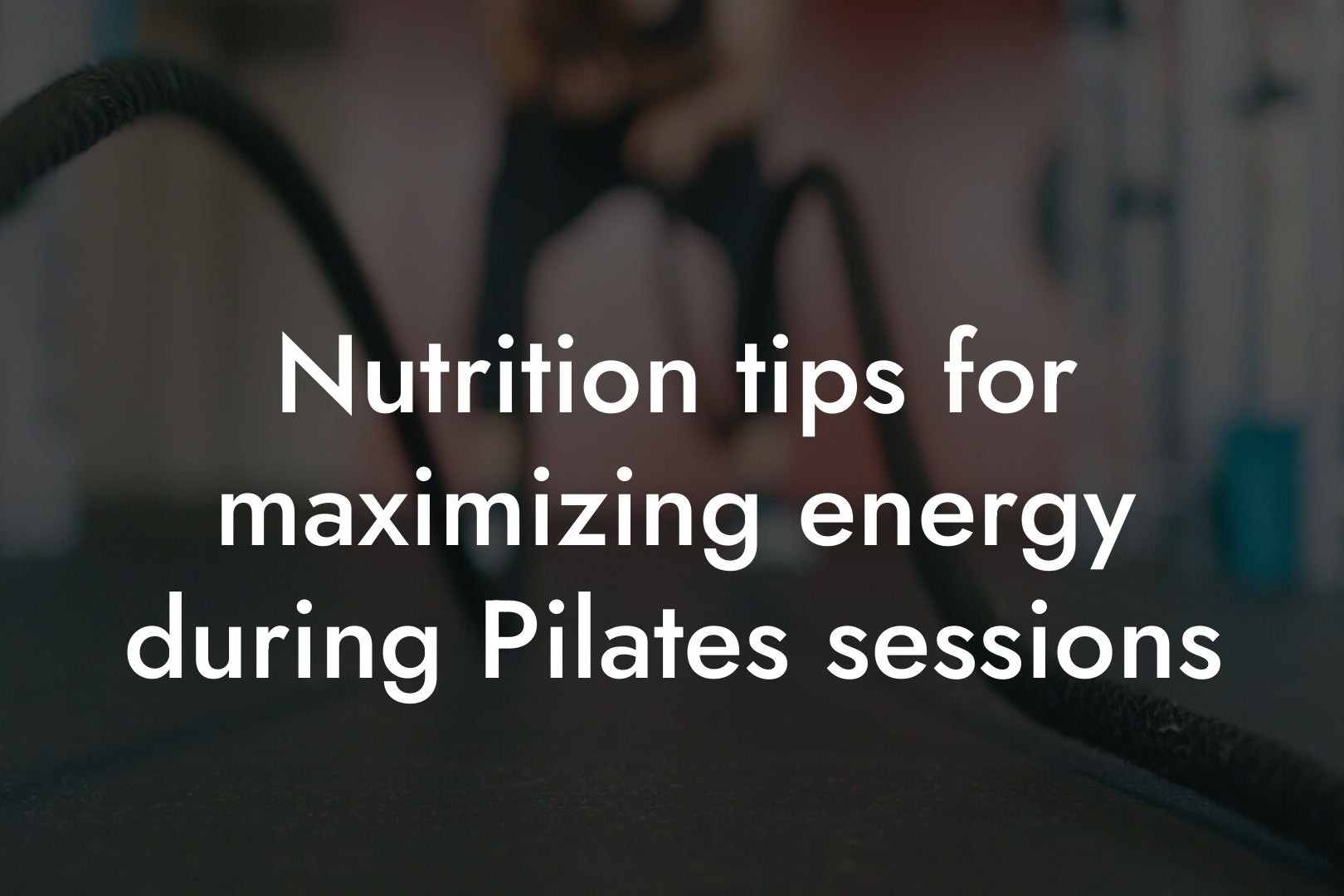As high-earning professionals, you understand the importance of taking care of your physical appearance and overall health. A strong core is essential for maintaining good posture, preventing injuries, and improving overall physical performance. Pilates is an excellent way to build core strength, and in this article, we'll explore the importance of core strength in Pilates and how it can benefit your overall fitness and physique.
Table of Contents
What is Core Strength?
Core strength refers to the strength and stability of the muscles in your trunk, including your abdominals, obliques, and lower back. These muscles work together to provide a solid foundation for your entire body, enabling you to move efficiently and effectively. A strong core helps to improve your posture, balance, and overall athletic performance.
Why is Core Strength Important in Pilates?
In Pilates, core strength is essential for maintaining proper form and technique. Pilates exercises often engage the core muscles to provide stability and control, allowing you to move with precision and fluidity. A strong core helps to:
- Improve posture and reduce back pain
- Enhance balance and coordination
- Increase power and efficiency in movement
- Reduce the risk of injury
- Improve overall athletic performance
How Does Pilates Improve Core Strength?
Pilates is an excellent way to build core strength due to its focus on controlled movements, breathing, and concentration. Pilates exercises engage the core muscles in a variety of ways, including:
- Isometric contractions: Holding a position for a period of time to engage the core muscles
- Dynamic movements: Moving through a range of motion to challenge the core muscles
- Rotation and twisting: Engaging the obliques to improve rotational strength and control
- Bodyweight exercises: Using your own body weight to challenge the core muscles
Core Strengthening Exercises in Pilates
Some of the most effective Pilates exercises for building core strength include:
- The Hundred: A classic Pilates exercise that engages the abdominals and lower back
- The Teaser: A challenging exercise that targets the obliques and lower back
- The Roll-Up: A dynamic exercise that engages the abdominals and lower back
- The Side Bends: An exercise that targets the obliques and improves rotational strength
Benefits of Strong Core in Pilates
A strong core provides numerous benefits in Pilates, including:
- Improved posture and reduced back pain
- Enhanced balance and coordination
- Increased power and efficiency in movement
- Reduced risk of injury
- Improved overall athletic performance
How to Incorporate Core Strengthening into Your Pilates Practice
To incorporate core strengthening into your Pilates practice, try the following:
- Start with beginner exercises and gradually progress to more challenging movements
- Focus on proper form and technique to ensure you're engaging your core muscles effectively
- Incorporate core strengthening exercises into your daily routine, even if it's just for a few minutes a day
- Work with a qualified Pilates instructor to develop a personalized core strengthening program
In conclusion, core strength is essential for maintaining good posture, preventing injuries, and improving overall physical performance in Pilates. By incorporating core strengthening exercises into your Pilates practice, you can improve your overall fitness and physique, and take your business to the next level. At Tano Performance Group, we understand the importance of core strength and offer comprehensive body assessments using our state-of-the-art DEXA machine. Contact us today to learn more about how we can help you achieve your fitness goals.
Frequently Asked Questions
What is core strength and why is it important in Pilates?
Core strength refers to the stability and control of the muscles in your trunk, including your abdominals, obliques, and lower back. In Pilates, core strength is essential because it provides a solid foundation for movement, allowing you to maintain proper posture, generate power, and reduce the risk of injury. A strong core also improves overall athletic performance, balance, and coordination.
What are the benefits of having a strong core in Pilates?
A strong core in Pilates can improve your posture, balance, and overall physical performance. It can also reduce your risk of injury, enhance your athletic performance, and increase your overall sense of well-being. Additionally, a strong core can help you achieve a flatter stomach, improve your flexibility, and boost your confidence.
How does Pilates help improve core strength?
Pilates is a low-impact form of exercise that focuses on controlled movements that engage the core muscles. Through a series of exercises and movements, Pilates helps to strengthen the muscles in your trunk, improve your posture, and increase your flexibility. By targeting the deep core muscles, Pilates can help improve your overall core strength and stability.
What are some common mistakes people make when trying to improve their core strength in Pilates?
One common mistake people make when trying to improve their core strength in Pilates is relying too heavily on their superficial muscles, such as their abs, rather than engaging their deep core muscles. Another mistake is not maintaining proper form and technique, which can put unnecessary strain on the muscles and joints. Additionally, people may not focus enough on their breathing and engagement of the core muscles, which is essential for effective core strengthening.
How often should I practice Pilates to see improvements in my core strength?
To see improvements in your core strength, it's recommended to practice Pilates at least 2-3 times per week, with a minimum of 30-45 minutes per session. However, the frequency and duration of your practice will depend on your individual goals, fitness level, and schedule. Consistency is key, so it's better to practice Pilates regularly for shorter periods of time than to try to cram all your practice into one or two long sessions per week.
Can I improve my core strength with Pilates if I'm a beginner?
Absolutely! Pilates is a low-impact form of exercise that can be modified to suit different fitness levels, including beginners. In fact, Pilates is an excellent way for beginners to improve their core strength because it focuses on controlled movements and proper technique, which can help prevent injuries and improve overall physical fitness. A good Pilates instructor can also provide modifications and adjustments to help you progress at your own pace.
How does Pilates compare to other forms of exercise for improving core strength?
Pilates is a unique form of exercise that targets the deep core muscles, which are often neglected in other forms of exercise. While other forms of exercise, such as yoga or weightlifting, can also improve core strength, Pilates is specifically designed to target the core muscles and improve overall physical fitness. Additionally, Pilates is a low-impact form of exercise, making it an excellent option for people who are recovering from injuries or have chronic pain.
Can Pilates help with back pain and other injuries?
Yes, Pilates can be very effective in helping to alleviate back pain and other injuries. By strengthening the core muscles and improving posture, Pilates can help reduce the strain on the back and other joints, which can help reduce pain and inflammation. Additionally, Pilates can help improve flexibility and range of motion, which can also help reduce pain and discomfort.
How does Pilates improve posture and reduce back pain?
Pilates improves posture and reduces back pain by strengthening the muscles in the trunk, including the abdominals, obliques, and lower back. By engaging these muscles, Pilates helps to stabilize the spine and improve overall posture, which can reduce the strain on the back and other joints. Additionally, Pilates helps to improve flexibility and range of motion, which can also help reduce back pain and discomfort.
Can Pilates help with weight loss and body fat reduction?
While Pilates is not a high-intensity form of exercise, it can still help with weight loss and body fat reduction. By improving your overall physical fitness and increasing your muscle mass, Pilates can help boost your metabolism and burn more calories at rest. Additionally, Pilates can help improve your posture and overall physical appearance, which can also contribute to a more toned and lean physique.
How does Pilates improve bone density?
Pilates can help improve bone density by strengthening the muscles and improving posture, which can reduce the strain on the bones and joints. Additionally, Pilates can help improve balance and coordination, which can reduce the risk of falls and fractures. By improving overall physical fitness and muscle mass, Pilates can also help stimulate bone growth and density.
Can Pilates be modified for people with osteoporosis or other bone-related conditions?
Yes, Pilates can be modified for people with osteoporosis or other bone-related conditions. In fact, Pilates is an excellent form of exercise for people with osteoporosis because it is low-impact and can help improve bone density. A good Pilates instructor can provide modifications and adjustments to help you progress safely and effectively, and can also help you avoid exercises that may be contraindicated for your condition.
How does Pilates improve athletic performance and overall physical fitness?
Pilates can improve athletic performance and overall physical fitness by strengthening the core muscles, improving posture, and increasing flexibility and range of motion. By improving overall physical fitness, Pilates can also help boost endurance, speed, and agility, which can enhance athletic performance. Additionally, Pilates can help reduce the risk of injury and improve overall physical appearance.
Can Pilates be used as a form of cross-training for other sports and activities?
Absolutely! Pilates is an excellent form of cross-training for other sports and activities because it can help improve overall physical fitness, flexibility, and range of motion. By strengthening the core muscles and improving posture, Pilates can also help reduce the risk of injury and improve overall athletic performance. Additionally, Pilates can help improve balance and coordination, which can be beneficial for many sports and activities.
How does Pilates improve flexibility and range of motion?
Pilates improves flexibility and range of motion by incorporating slow, controlled movements that target the deep core muscles and improve overall flexibility. By improving flexibility and range of motion, Pilates can help reduce the risk of injury, improve overall physical fitness, and enhance athletic performance.
Can Pilates help with stress relief and overall well-being?
Yes, Pilates can be very effective in helping with stress relief and overall well-being. By incorporating deep breathing and relaxation techniques, Pilates can help reduce stress and anxiety, and improve overall mental and physical well-being. Additionally, Pilates can help improve self-confidence and body awareness, which can also contribute to overall well-being.
How does Pilates improve body awareness and self-confidence?
Pilates improves body awareness and self-confidence by incorporating exercises that target the deep core muscles and improve overall physical fitness. By improving body awareness, Pilates can help you develop a better understanding of your body and how it moves, which can improve overall physical performance and reduce the risk of injury. Additionally, Pilates can help improve self-confidence by providing a sense of accomplishment and empowerment.
Can Pilates be done at home or do I need to attend a studio?
Both! Pilates can be done at home with a DVD or online program, or you can attend a studio with a certified instructor. While attending a studio can provide personalized instruction and feedback, doing Pilates at home can be more convenient and cost-effective. Ultimately, the choice depends on your personal preference and fitness goals.
How do I find a qualified Pilates instructor or studio?
To find a qualified Pilates instructor or studio, look for certifications from reputable organizations such as the Pilates Method Alliance or the International Pilates Federation. You can also ask for referrals from friends, family, or healthcare professionals, or check online reviews and ratings. Additionally, make sure the instructor or studio has experience working with clients with similar needs and goals as you.
What should I wear to a Pilates class or session?
Wear comfortable, breathable clothing that allows for a full range of motion. Avoid loose or baggy clothing that may get in the way of your movements. You may also want to wear grip socks or Pilates socks to help prevent slipping on the mat. Additionally, remove any jewelry or accessories that may interfere with your movements or cause discomfort.
How long does it take to see results from Pilates?
The amount of time it takes to see results from Pilates depends on several factors, including your starting fitness level, the frequency and duration of your practice, and your overall consistency. However, with regular practice, you can start to see improvements in your core strength, posture, and overall physical fitness within a few weeks to a few months. Be patient, stay consistent, and celebrate your progress along the way!
Here are some related articles you might love...
- Recovery strategies for Pilates practitioners
- Bone density and its role in Pilates practice
- Nutrition tips for maximizing energy during Pilates sessions
- How body composition impacts Pilates performance
- Using DEXA scans to optimize Pilates training
- How to integrate Pilates into a balanced fitness routine
- Reducing body fat for improved Pilates results
- Maintaining flexibility and muscle tone with Pilates
- Pilates for injury prevention and rehabilitation
Zak Faulkner
Zak Faulkner is a leading authority in the realm of physical health and body composition analysis, with over 15 years of experience helping professionals optimise their fitness and well-being. As one the experts behind Tano Performance Group, Zak has dedicated his career to providing in-depth, science-backed insights that empower clients to elevate their physical performance and overall health.
With extensive knowledge of DEXA technology, Zak specializes in delivering comprehensive body assessments that offer precise data on body fat, muscle mass, bone density, and overall physique. His expertise enables individuals to make informed decisions and achieve their fitness goals with accuracy and confidence. Zak’s approach is rooted in a deep understanding of human physiology, combined with a passion for helping clients unlock their full potential through personalised strategies.
Over the years, Zak has earned a reputation for his commitment to excellence, precision, and client-focused service. His guidance is trusted by top professionals who demand the best when it comes to their health. Whether advising on fitness programs, nutritional strategies, or long-term wellness plans, Zak Faulkner’s insights are a valuable resource for anyone serious about taking their health and fitness to the next level.
At Tano Performance Group, Zak continues to lead our Content Team revolutionising how professionals approach their physical health, offering unparalleled expertise that drives real results.




